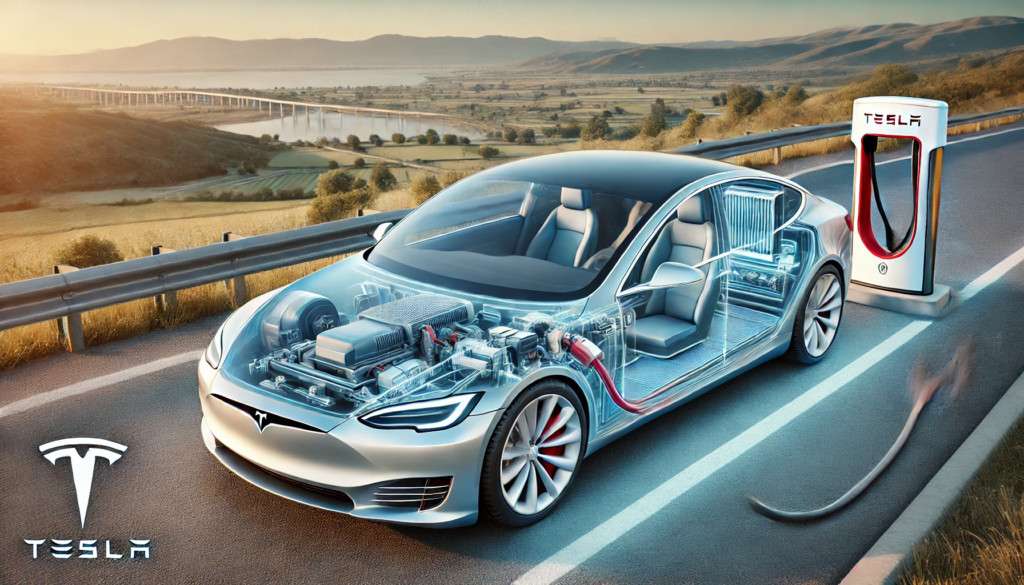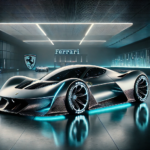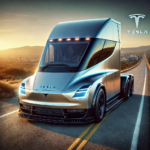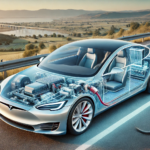Introduction
The world is shifting towards electric vehicles (EVs), and while Tesla has been a major driving force behind this transition, one of the biggest reasons for its success is not just the cars—it’s the Supercharger network. When you think of an EV, charging is probably one of the first concerns that comes to mind. How long will it take? Will I find a charger on my road trip? Tesla saw these concerns and decided to solve them head-on by building a vast network of fast chargers.
This blog takes a deep dive into Tesla’s Supercharger network, how it works, why it’s so crucial for EV adoption, and what the future holds for it.
Why Charging Infrastructure is Critical for EV Adoption
Imagine taking a road trip in a gas-powered car. You don’t think twice about stopping at a gas station, filling up, and hitting the road again in minutes. But when EVs first started gaining popularity, charging wasn’t that simple. Range anxiety, or the fear of running out of battery without a nearby charging station, was (and still is) a major hurdle for many potential EV buyers.
That’s why Tesla’s Supercharger network is so important. It eliminates this anxiety by making long-distance EV travel just as convenient as traditional gasoline-powered vehicles. With thousands of Superchargers around the world, Tesla has made sure that its drivers can confidently take road trips without worrying about where to charge.

What is the Tesla Supercharger Network?
Tesla’s Supercharger network is a global system of high-speed charging stations built specifically for Tesla vehicles. Unlike regular public chargers, which can take hours to charge an EV, Superchargers are designed to quickly add range to Tesla cars—making them the EV equivalent of gas stations.
Key Features of Tesla Superchargers:
- Blazing-Fast Charging: Newer V3 Superchargers can deliver up to 250 kW, adding about 200 miles of range in just 15 minutes.
- Global Reach: With over 50,000 Superchargers worldwide, Tesla has the most extensive fast-charging network.
- Smart Navigation: Tesla’s onboard navigation system directs drivers to the nearest Supercharger and even estimates charging time.
- Strategic Placement: Superchargers are located near highways, city centers, shopping areas, and restaurants for convenience.
Tesla’s charging stations are designed to be user-friendly, requiring no app downloads or payment cards—simply plug in and charge.
The Evolution of Tesla’s Supercharger Network
Tesla’s journey with the Supercharger network started in 2012, and since then, the company has been constantly improving charging speeds, efficiency, and accessibility.
V1 and V2 Superchargers
- The first-generation Superchargers provided charging speeds of up to 120 kW, allowing Tesla drivers to charge in about 45-60 minutes.
- While revolutionary at the time, they were still slower compared to the latest charging technology.
V3 Superchargers (2019 – Present)
- Tesla introduced V3 Superchargers, which are much faster, providing up to 250 kW of power.
- These new chargers eliminate power-sharing, meaning each vehicle gets the maximum power available.
- As a result, charging times are dramatically reduced, making Tesla road trips even more seamless.
What’s Next? V4 Superchargers
- Tesla is working on V4 Superchargers, rumored to provide even higher charging speeds.
- Future versions are expected to support more non-Tesla EVs as part of Tesla’s network expansion plans.
- Enhanced cooling technology will allow for higher efficiency and better battery health.
Tesla’s Move to Open Superchargers to Other EVs
In a major shift, Tesla has started opening up its Supercharger network to non-Tesla EVs in select locations. This move is a game-changer for the entire EV industry because it:
- Expands fast-charging options for all EV drivers.
- Encourages widespread EV adoption, making it easier for people to switch from gas to electric.
- Strengthens Tesla’s influence in the EV charging industry, generating additional revenue.
Currently, this program is being tested in Europe and the U.S., with plans to scale globally.
Sustainability and the Supercharger Network
Tesla’s mission is not just about building EVs—it’s about transitioning the world to sustainable energy. That’s why the Supercharger network is also evolving to rely more on renewable energy sources.
Key Sustainability Initiatives:
- Solar-Powered Superchargers: Tesla has been adding solar canopies to some charging stations to reduce dependence on fossil fuels.
- Energy Storage Integration: Tesla is using Powerpacks and Megapacks at select locations to store excess renewable energy.
- Reducing Carbon Footprint: By integrating clean energy, Tesla aims to make charging as green as the vehicles themselves.
The Impact of Tesla’s Supercharger Network on EV Ownership
The convenience of the Supercharger network is one of the biggest reasons why Tesla owners love their cars. Here’s how it has transformed the EV experience:
- No More Range Anxiety: Long road trips are now easy with thousands of fast chargers available worldwide.
- Quick and Hassle-Free Charging: Superchargers are fast, user-friendly, and strategically located.
- A Superior EV Experience: Tesla’s charging ecosystem is far more convenient compared to third-party charging networks.
Challenges and Future Prospects
While Tesla’s Supercharger network is impressive, it still faces some challenges:
Current Challenges:
- Charging Demand: As more Tesla vehicles hit the road, congestion at Superchargers can be an issue.
- High Installation Costs: Expanding the network requires significant investment.
- Compatibility with Other EVs: Opening Superchargers to non-Teslas presents technical and logistical challenges.
Future Goals:
- Faster Charging Speeds: Tesla is constantly working on reducing charging times.
- More Stations: Expanding the network to ensure minimal wait times.
- Better Energy Efficiency: Integrating more solar power and battery storage at charging stations.
Conclusion
Tesla’s Supercharger network is more than just a charging infrastructure—it’s the foundation of the EV revolution. By making EV travel convenient, fast, and stress-free, Tesla has helped eliminate one of the biggest barriers to EV adoption.
With continuous innovations, an expanding global presence, and a shift toward renewable energy, Tesla’s Supercharger network will remain a key player in shaping the future of electric mobility.
If you’re thinking about getting an EV, having access to a reliable, fast-charging network is one of the most important factors to consider. And as it stands, Tesla’s Supercharger network is the gold standard in the industry.
What’s your take on Tesla’s Supercharger network? Have you used one? Share your thoughts and experiences in the comments!







